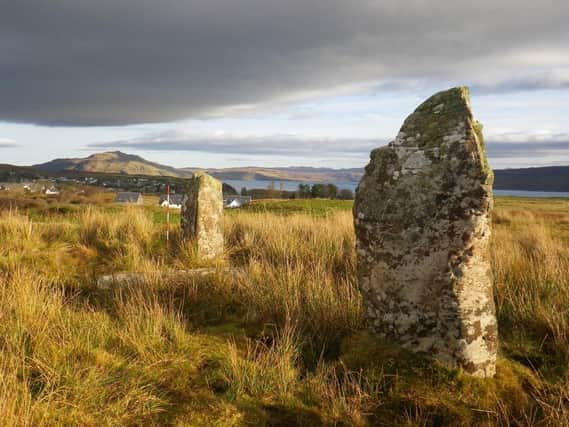The mysterious moon-tracking stones on Mull that were 'portals to the afterworld'


The short stone rows of Mull, a type of ancient monument made up of three to five standing stones arranged in a line, are one of the most unique archaeological features of the island, according to Dr Clare Ellis of Argyll Archaeology.
Intriguingly, quartz and crystal shards found at a number of sites may have been shattered to reflect the light of the fire or moon on a ritual night, creating an ethereal atmosphere at the monuments, which may have been considered portals to the underworld.
Advertisement
Hide AdAdvertisement
Hide AdDr Ellis visited the island to explore the stones for a recent article for Dig It!, which promotes archaeology for the Society of Antiquaries Scotland. There are eight or possibly nine sites across the north and east of Mull.
She said: “The date and function of these mysterious monuments remains unclear, but archaeologists think that they were built around 3,000 years ago to follow the path of the moon throughout the year.”
Research has shown that short stone rows in the north of the island are oriented so that the cycle of the moon could be tracked from them, Dr Ellis said.
Locations of the stone rows at Maol Mor, Cnoc Fada, Kilmore, Glengorm and Ach’nan Carragh were also chosen with the prominent peak of Ben More in such a position to be associated with the southernmost rising moon.
Dr Ellis added: “The moon being the most visible object in the sky was used to measure time using the number of days (roughly 28 days) between no moon and full moon. The lunar cycle is also closely associated with tides and fertility cycles.”
Evidence from sites at Ardnacross, Glengorm and Baliscate indicate that rituals involving extensive use of fire as well as the burial of the dead took place.
Dr Ellis said: “Quartz chippings and crystals found scattered across these sites suggest these rituals were accompanied by flickering and dancing fire and moon light which refracted and reflected off the quartz. It has been suggested that these monuments acted as ‘portals to the underworld’.”
Quartz has been associated with housing spirits and as a means of connection with the after-world since Neolithic times, Dr Ellis added.
Advertisement
Hide AdAdvertisement
Hide AdThe stone emits a greenish spark and a cordite-like smell when struck.
A similar scattering of quartz to that on Mull has been found at short rows in Ireland and in Connemara in Galway, a number of short rows consist solely of large blocks of white quartz were placed.
Some of the passage graves at at Clava Cairns near Inverness have pieces of white quartz embedded in their structures with quartz pebbles also left with the buried.
In Aberdeenshire, pieces of quartz were found deposited opposite the Neolithic stone circle at Cothiemuir Wood.
Meanwhile, on Mull’s neighbour of Iona, a sacred stone by St Orans chapel had three hollows, and in each hollow rested a piece of quartz or ‘white stone’.
